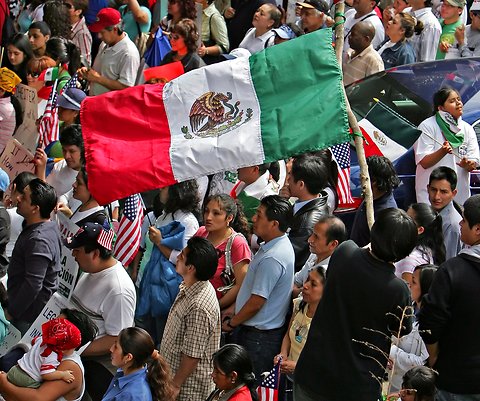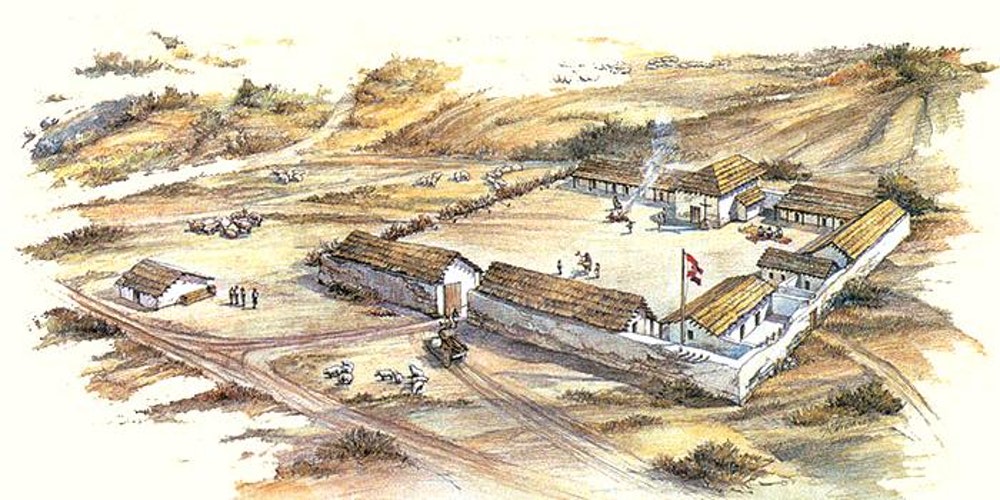Business owners accuse state government ‘cartel’ of corruption
Compiled by Mexico News Daily
Quintana Roo is the latest state to see a self-defense group form in response to the inability of authorities to control crime, corruption and impunity.
Yesterday, a group of 20 business owners headed by real estate entrepreneur Carlos Mimenza announced the formation of a group to combat rising levels of insecurity and corruption that they say are provoked by the current government.
After initially supporting Governor Carlos Joaquín González, they say they now feel betrayed by his actions.
González assumed office in September last year after Roberto Borge, who is currently detained in Panama, completed his term.
“The self-defense project is very serious. Violations of the law by the current government are very repetitive, we have evidence of the corruption and authorities are simply not acting,” Mimenza stated in an interview with the newspaper Reforma.
“And not only do they not act but they are attacking, intimidating, making death threats and even executing people to silence voices in Quintana Roo.”
Mimenza cites the example of former municipal police officer Héctor Casique Fernández, who died earlier this month while under state protection. Casique was imprisoned for three years during Borge’s administration and forced under torture to confess to being involved in organized crime.
Mimenza alleges that state authorities were responsible for his death.
The group released a video yesterday featuring Mimenza and five other men — all dressed in black and who remain silent throughout — warning that the self-defense group would be keeping an eye on the actions of state officials.
“The makeup of this group includes 200 people [who are] ready to act in the case of an attack against us or our close circles,” Mimenza warned while his partners either nodded their heads in agreement or simply continued to stare at the camera.
“This is not a call to take up arms, at least not at this time. This is a call to form, to organize and to oversee 24 hours a day every single movement of the government of Carlos Joaquín González.”
He also warned that members of the group had even infiltrated government and were monitoring their actions from within.
Mimenza — who has a history of speaking out against politicians he believes are involved in illicit activities such as money laundering and embezzlement — encouraged other people to get involved with the newly formed vigilante group.
“We make an extensive invitation to everyone, to every citizen, to join this project to defend ourselves from the continuous attacks executed by the cartel of Carlos Joaquín González and his armed branch of the judicial police.”
The founder of a self-defense movement in Michoacán, José Manuel Mireles, was cited as an inspiration to the group and also appeared in the video to offer his support.
Mireles also recognized the contribution of “mini-Deputy” Ángel Jacinto Noh Tun, a 12-year-old boy who made a fiery speech against corrupt politicians at a children’s parliament in the state earlier this year.
However, Mimenza made it clear that the founder of the Michoacán force was not directly involved in the Quintana Roo movement.
At the conclusion of the video, an increasingly aggressive Mimenza urges people watching to share it before ending with an ominous warning.
“Quintana Roo is ready to act and willing to do what is necessary.”
The state government later issued a press release in response.
“In relation to the irresponsible and slanderous declarations of one person, disseminated on social networks, the government of Quintana Roo notes that real change is made within the law and by respecting it. With the fight against impunity, things will be equal for everyone so that people live better.”
It also asserted that investigations were under way in relation to allegations against the former government.
“Based on accusations, investigations against former public officials were undertaken and as a result Roberto Borge was detained. His accomplices are under investigation.”
Source: Reforma (sp).
In six months, market for medical marijuana
Regulations being drawn up to allow import and sale of cannabis-based products
A domestic market for medical marijuana will begin operating in Mexico by the end of the year, a federal agency predicts.
The Federal Commission for Protection Against Health Risks (Cofepris) announced yesterday that that market is scheduled to open in six months, allowing businesses to import and sell cannabis-based products.
With the reforms to the General Health Law and the elimination of cannabis prohibition, patients that require such products are now free to import them, said Cofepris chief Julio Sánchez y Tépoz.
“At the moment there are 243 individual [import] applications by patients,” he explained.
One of those is nine-year-old Graciela Elizalde Benavides, from Monterrey, Nuevo León, who suffers from a type of epilepsy that provokes up to 400 seizures a day, leaving the child weak and sleepy. Despite her age, she doesn’t speak nor does she have the ability to move spontaneously and actively.
After trying several treatments, Graciela’s parents found a last option in cannabidiol, or CBD, an oil extracted from cannabis. Research showed that treatment using the oil could prove successful in alleviating the girl’s violent epileptic episodes.
During the intervening six months the federal Health Secretariat will prepare regulations for the therapeutical use of cannabis.
Growing marijuana plants is to be considered in those regulations, said Sánchez, but only for those interested in scientific research and not for commercializing cannabis byproducts.
Mexico approved marijuana use for medical and scientific purposes in April, which has prompted a United States-based firm to open an office in the country. HempMeds, which produces cannabis-based products, officially inaugurated its office in Monterrey, Nuevo León, today.
The market for medical marijuana in Mexico has been estimated to be worth as much as US $5 billion, Forbes reported today.
Source: El Universal (sp), Forbes (sp)










